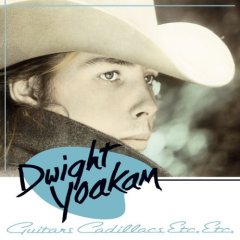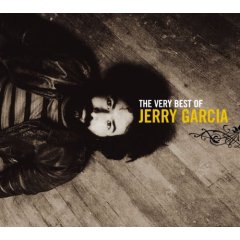 Written by Fumo Verde
Written by Fumo VerdeOk, katz and kittenz, here's one of those times when looking through glazed, bloodshot eyes pays off. Coming straight out of what was once known as East Germany are three feature films about the American West. Go ahead; do your double take. Yes, East German films, made smack in the middle of the Cold War, about what life was like in America during the Westward Expansion of the 1800s. I asked to review this just to see what the Communist propaganda machine was pumping out about American history, when life was overshadowed by the fears of living under a red moon, or in this case a red, white, and blue moon.
The DEFA was the East German film industry that produced such...uh, epics as this. Known as “Red Westerns,” they spin tales of the Old West from what they considered the Indians' side of the story. All three films were shot in places like Uzbekistan and Romania and the dialogue is German. Serbian actor, stuntman, and author, Gojko Mitic stars in all three films playing the German James Bond of Native Americans as he fights the never-ending battles of what is called the "great white tide."
The first flick I picked out of the pack was the first one made, which was
The Sons of Great Bear done in 1965. The story is about the white man’s lust for gold. It’s found in the Black Hills of the Dakota Territory, and slowly but surely the Natives are being pushed out. Great Bear is a chief who has hidden his tribe’s gold. How or why these Dakota Indians had gold was never told. Maybe the East Germans were prescient about Indian gaming?
One white guy named Red Fox, apparently the East Germans weren’t up on American comedians, happens to be friends with chief Great Bear, so much so that he calls him his brother. Ah, but as Cain downed Abel, Red stabs Great Bear when the Chief refuses to tell where he hid the tribe’s secret stash. The sons of Great Bear wait a few years before going on the warpath and seeking revenge. In the meantime, they suffer being moved to a barren, desolate reservation and being treated poorly by the U.S. Army and any white settler who happens to be in the camera's eye.
Like American Westerns of that same timespan, the hero never runs out of courage, compassion, guts, or ammunition. The scenery is breathtaking with its open valleys and snow-capped mountain ranges. Even the hot and dry lands of the American Southwest seem to have a counterpart in Eastern Europe. Now, I'm not talking like Red Rock or Choco Valley, more like Death Valley or that drive out east on the 10 freeway to Rubidoux.
This type of backdrop was used for
Apaches, filmed in 1973, which again was completely over the top in how evil the white settlers were and how easily the Native Americans could turn back the onslaught of white oppression. In
Apaches, there is a treaty signed with the Mexican Government, a copper mining company, and the Apaches. The U.S. Government sends out Johnson to exterminate the Apaches to, as Johnson sees it, secure the mine and search for more copper. On the day of celebration of the peace treaty signing, Johnson, who has been given a cannon from the U.S. Army, fires it into a crowd of Apaches receiving flour rations from the mining community. Mitic's character is one of the few survivors. He, along with his old father and a few other braves seek revenge on Johnson and his band of cutthroats.
The final film I found shaking my head to was
Chingachgook: The Great Snake made in 1967. Based on a James Fenimore Cooper novel, our red brothers have just recently met with the French and English and are learning the hard way that working with the whites isn't all that they said it would be. Great Snake is a Delaware, and the Huron have swiped his wife-to-be. As always, every white man within earshot is the devil with the exception of Great Snake's only white friend named (are you ready for this?) Deerslayer. Yes, the only good white guy is named after a great symbolic animal of Native culture. Awesome.
The funny thing about these movies and what they had to say is that they do have a point. The Europeans at the time believed themselves better than the native peoples in whatever land they had just "discovered." A good example came in
Chingachgook where an older English officer was expressing to one of his junior officers that "...we are here to exploit these natives and make sure that they war with themselves so we may take the land and all that we can profit from." Now, true that's what happened, but I don't think people went around telling it like that. Not every settler wanted to keep an Indian scalp as badge of honor. The bigger picture here is that not every capitalist will kill you for the sake of the bottom line, although a few will.
These movies shouldn't be taken seriously when it comes to historical fact, although one can get the gist of what the East Germans were saying. They exploited the exploits of the early European settlers of this nation, and used that to confirm the so-called glory of Communism. Capitalism expanded this country, but it alone didn’t kill off the Native American Indian. Fear, bigotry, and a non-yielding view that the savages’ beliefs were an act of devil worshipall contributed in the destruction of the native peoples, yet the East Germans didn't seem to catch that. Their whole target was the capitalist pig, and it shows.
As for the acting, it was all right, about as good as the American Westerns of the same era. The music was as expansive as the land the Indians covered. It went from orchestrated symphonies to guitar and harmonica duos, and one time I swear I thought I heard a
Beach Blanket Bingo type of rock music, but that could have been the super haze that was dropped into my bowl.
These movies are out there, but they do give some insight to what the people behind the Iron Curtain were viewing. The Red Westerns were the mirror opposite of the American Westerns: the good guy always won in the end, yet when he road off into the sunset, instead of waving his hat, he held up a tomahawk that he waved above his feathered headdress. I suggest that if one were to watch these Westerns, one needs to get twisted.
This is Fumo.... pack one for me.























